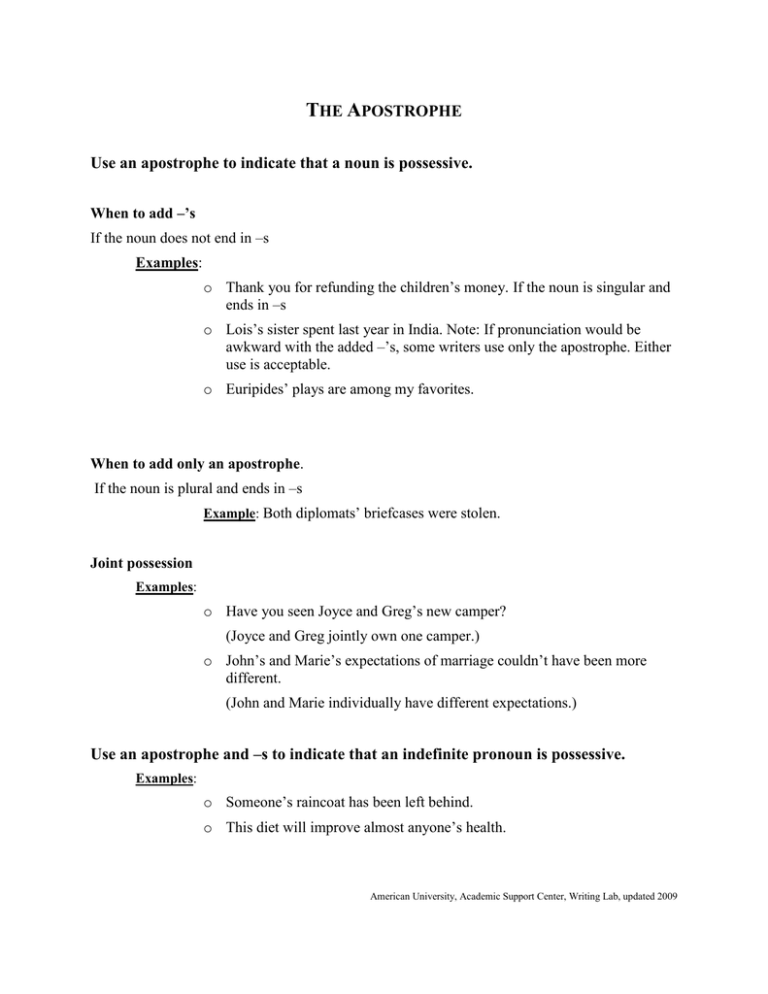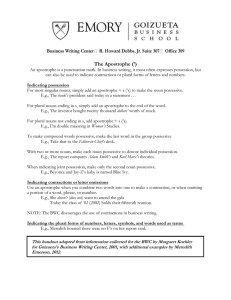T A HE
advertisement

THE APOSTROPHE Use an apostrophe to indicate that a noun is possessive. When to add –’s If the noun does not end in –s Examples: o Thank you for refunding the children’s money. If the noun is singular and ends in –s o Lois’s sister spent last year in India. Note: If pronunciation would be awkward with the added –’s, some writers use only the apostrophe. Either use is acceptable. o Euripides’ plays are among my favorites. When to add only an apostrophe. If the noun is plural and ends in –s Example: Both diplomats’ briefcases were stolen. Joint possession Examples: o Have you seen Joyce and Greg’s new camper? (Joyce and Greg jointly own one camper.) o John’s and Marie’s expectations of marriage couldn’t have been more different. (John and Marie individually have different expectations.) Use an apostrophe and –s to indicate that an indefinite pronoun is possessive. Examples: o Someone’s raincoat has been left behind. o This diet will improve almost anyone’s health. American University, Academic Support Center, Writing Lab, updated 2009 Use an apostrophe and –s to pluralize numbers mentioned as numbers, letters mentioned as letters, words mentioned as words, and abbreviations. Examples: Peggy skated nearly perfect figure 8’s. The bleachers in our section were marked with large red J’s. We’ve heard enough maybe’s. You must ask to see their I.D.’s. Exception: • the 1980s. Source: Hacker, Diana. The Bedford Handbook for Writers. Boston: St. Martin’s Press, 1991 American University, Academic Support Center, Writing Lab, updated 2009








